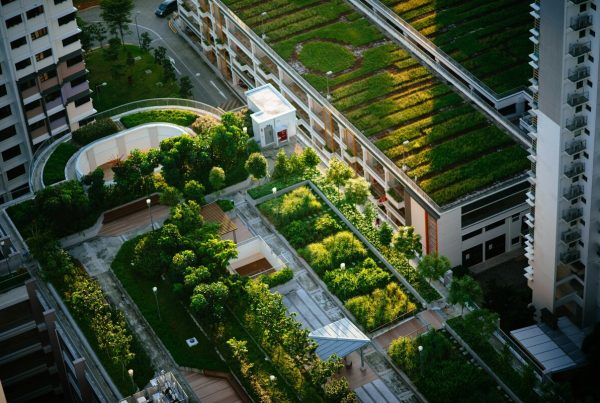Last month, architect Steve Mouzon made the case for Anti-LEED in a post at ArchDaily.
At first glance, Anti-LEED sounds like an outright bashing. There’s that prefix anti after all. And we all know LEED is no stranger to criticism and challenges, being the premier green building standard all over the world for the last two decades. Up until now, LEED’s main detractors—the various chemicals, plastics, and lumber industry whose building materials just don’t comply with LEED’s ever more stringent standards—are still complaining. Instead of finding ways to make their products safer and more sustainable, these companies band together, get backing from a few politicians, and plot ways to ban LEED in several states in the U.S.
But Mouzon admits the name is a misnomer. He maintains he’s all for LEED, he’s not really after LEED’s abolition. He just wants to propose an alternative green building standard that’s “fast, friendly, and free.”
LEED Shortcomings
Mouzon has some very interesting and valid points regarding the shortcomings of LEED. To paraphrase:
- That LEED is northern-hemisphere-centric, with its emphasis on sealing buildings tight to keep the heat in, which would not do well in the hot and humid tropical context.
- That LEED favors so-called “gizmo green solutions”, which can be very expensive to install or retrofit, making LEED only for the wealthy. The poor or even the middle-class who would like to build green is at a disadvantage.
- That LEED treats building siting equally, whether that be in the city, town, suburbs, village, hamlets, etc., even if the requirements of sustainability differ in those areas.
- That LEED’s point system makes it easier for buildings to “accumulate points any way it likes.”
- That LEED’s point system is deliberately complicated so that projects will need to consult LEED Accredited Professionals (LEED-APs), from which the USGBC makes most of its money.
On the contrary, Mouzon’s proposed Anti-LEED alternative addresses these shortcomings by:
- Taking into consideration the siting of the building, especially in the tropical context.
- Multiplying “the ‘batting average’ of the settlement (city, town, village, or hamlet) by that of the neighborhood by that of the building” to finally determine the sustainability of a building.
- Making the calculations easy enough for people to make. According to Mouzon, “ideally, a person who knows how to balance their checkbook and do their taxes should be able to rate their building in about an hour.”
- Making LEED accessible not just to the wealthy 1{e3829ec1db02d54faaf9fa2de0d48db26af01d7a7944a63c3b26976124791cab} of the world’s population but to everyone who would like to build green.
Alternatives to LEED
LEED, of course, is not the only game in town. Even before LEED, there was Germany’s Passivhaus and the UK’s BREEAM. In the U.S. other LEED alternatives have sprouted, either inspired by or in reaction to LEED, such as the Living Building Challenge and Green Globes. Some of the alternatives are genuinely concerned with sustainability. While some are just ploys to accommodate the various chemicals, plastics, and lumber industries that are banned from LEED.
As Mouzon admits, LEED works efficiently in some levels, but just not that effectively in the tropical context. The tropics pose a different set of challenges for green building.
Fortunately, the locals have long ago solved those challenges on their own. Traditional houses in provinces are made with resilient, sturdy materials such as bamboo and native hardwood lumber, all sourced within a few hundred kilometers. They’re well ventilated, with lots of operable windows. And the houses are always modestly sized.
And besides, in the provincial and rural settings of tropical countries, not everyone has serious cash to blow on LEED consultations. The simple folks who built these humble dwellings didn’t have to aspire to a LEED certification. But what they and their ancestors have come up with is every bit as sustainable as some fancy 40,000 sqm residential home in the countryside, whose LEED certification Mouzon denounces.
Debate Ensues
Not unexpectedly, Mouzon’s article garnered a lot of comments back at Archdaily. What with his bold opening statement that goes, “The LEED rating systems were a great idea in the beginning, but they have become a symbol of all that is wrong with green building today,” he’s bound to get a few strong reactions especially from LEED proponents.
You can head over to the comments section of his original article just to see how the debate goes on. It’s a healthy, friendly debate, which is all the better because we need all the good minds to steer green building in a better and clearer direction.











